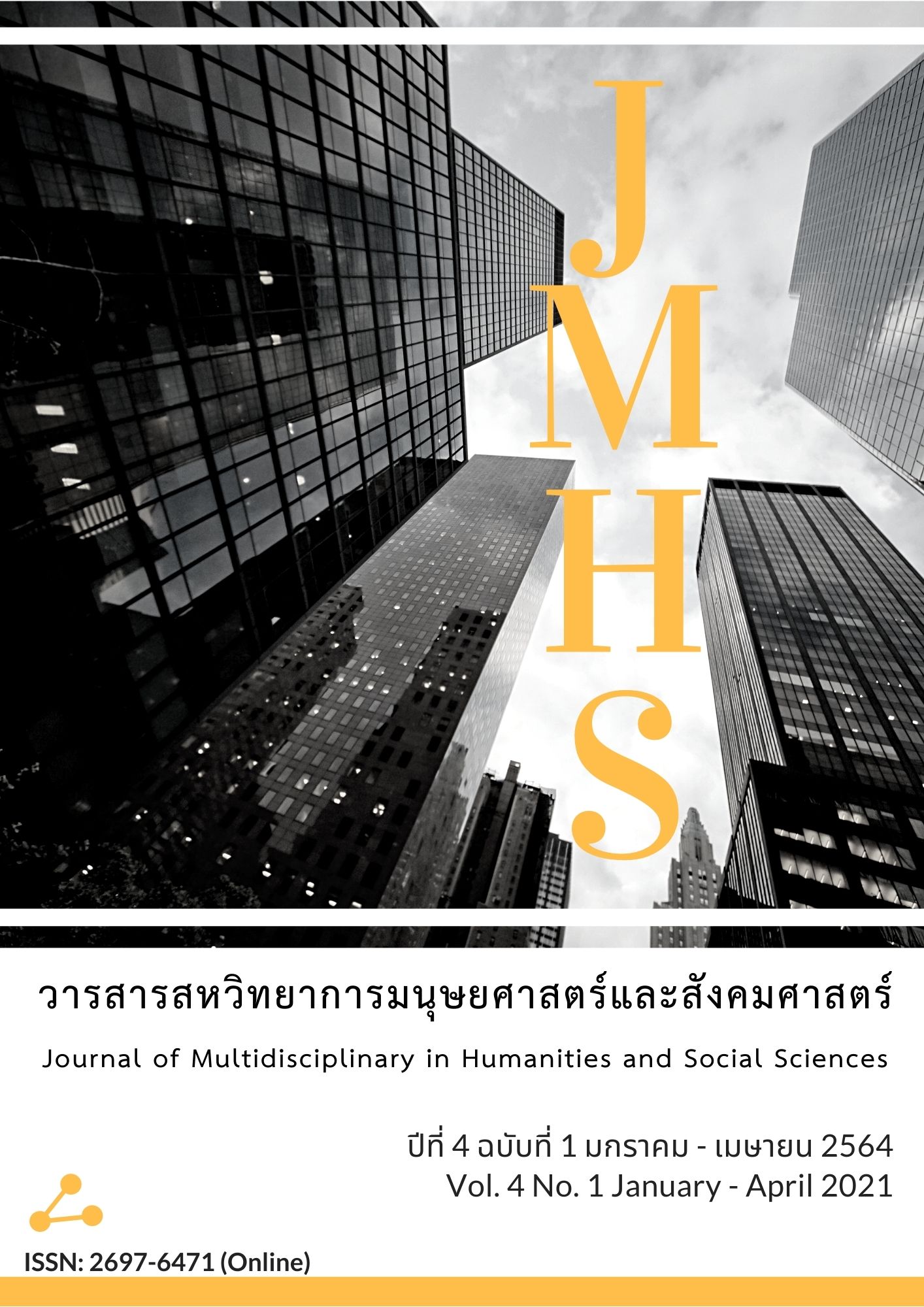Comparison of Learning Characteristics of Students between Normal classroom and Special Science-Mathematics classroom in Secondary Education Service Area Office 2
Main Article Content
Abstract
This article aimed to (1) study the learning characteristics of students in a normal classroom and special science-mathematics classroom, and (2) compare the learning characteristics of students between normal classroom with special science-mathematics classroom. The sample of 397 subjects from normal classroom and 375 subjects from science-mathematics classroom were obtained by using the technique of multistage random sampling. Data were collected by using a questionnaire and were analyzed by MANOVA.
The findings were as follows: 1. The learning characteristics in normal classroom had only 3 variables which had average score more than 50 percent consisted of diligence, special interests, and good memory. The students in special science-mathematics classroom had 14 variables which had average score more than 50 percent consisted of quick thinking, thinking properly, systematic operation, flexible working, good communication ability, self-sensitivity and understanding of other people's thoughts, role in group work, desire to seek friends, responsibility, discipline, technology capability, self-efficacy, attitude to learning, and problem-solving ability. Besides, the being creative variable of both groups had an equal average score at 50 percent.
2. The comparison of the learning characteristics of students between normal classroom with special science-mathematics classroom showed the statistically significant differences between the two groups at the level of .05.
3. There were 11 variables of the learning characteristics consisted of quick thinking, thinking properly, systematic operation, flexible working, self-sensitivity and understanding of other people's thoughts, role in group work, responsibility, discipline, technology capability, attitude to learning and problem-solving ability showed the statistically significant differences between the two groups at the level of .0027.
Article Details
Views and opinions appearing in the Journal it is the responsibility of the author of the article, and does not constitute the view and responsibility of the editorial team.
References
โครงการ PISA ประเทศไทย สถาบันส่งเสริมการสอนวิทยาศาสตร์และเทคโนโลยี. (2560). ประเด็นหลักและนัยทางการศึกษาจาก PISA 2015: บทสรุปสำหรับผู้บริหาร. กรุงเทพฯ: ซัคเซสพับลิเคชั่น จำกัด.
โครงการ PISA ประเทศไทย สถาบันส่งเสริมการสอนวิทยาศาสตร์และเทคโนโลยี. (2562). Focus ประเด็นจาก PISA: ผลการประเมิน PISA 2018: นักเรียนไทยวัย 15 ปี รู้และทำอะไรได้บ้าง. สืบค้นเมื่อ 28 มิถุนายน 2563. จาก https://pisathailand.ipst.ac.th/issue-2019-48/
ณฐกรณ์ ดำชะอม. (2560). การบริหารจัดการห้องเรียนพิเศษวิทยาศาสตร์คณิตศาสตร์เทคโนโลยีและสิ่งแวดล้อม (วิทยานิพนธ์หลักสูตรปรัชญาดุษฎีบัณฑิต สาขาวิชาการบริหารการศึกษา). มหาวิทยาลัยศิลปากร.
ดวงแก้ว เฉยเจริญ. (2558). การวิเคราะห์องค์ประกอบของคุณลักษณะอันพึงประสงค์ในการเรียน วิชาที่เน้นการปฏิบัติของนักเรียนชั้นมัธยมศึกษาตอนต้น. วารสารบัณฑิตศึกษา มหาวิทยาลัยราชภัฏวไลยอลงกรณ์ ในพระบรมราชูปถัมภ์, 9(3), 160-172.
ธนกฤต นิวิฐชยางกูล. (2561). ความสัมพันธ์ระหว่างการเรียนรู้ด้วยการนำตนเองกับการใช้สื่ออิเล็กทรอนิกส์ของนักศึกษาระดับปริญญาตรี มหาวิทยาลัยรามคำแหง (วิทยานิพนธ์ศิลปศาสตรมหาบัณฑิต). มหาวิทยาลัยรามคำแหง.
ปุญญากรณ์ วีระพงษานันท์. (2561). การพัฒนาแบบวัดลักษณะนิสัยการคิดอย่างมีวิจารณญาณของนักเรียนชั้นมัธยมศึกษาตอนปลายในเขตกรุงเทพมหานคร. วารสารสุขศึกษา, 41(1), 35-48.
มาลินี จุฑะรพ. (2541). จิตวิทยาการเรียนการสอน. (พิมพ์ครั้งที่ 3). กรุงเทพฯ: ทิพยวิสุทธิ์.
รุ้งลาวัณย์ จันทรัตนา. (2561). การประเมินโครงการจัดตั้งห้องเรียนพิเศษโปรแกรมวิทยาศาสตร์และคณิตศาสตร์ Science and Mathematics Program (SMP) มหาวิทยาลัยราชภัฏยะลา. วารสารมหาวิทยาลัยราชภัฏยะลา, 13(2), 203-215.
วิภา อาสิงสมานันท์. (2562). มุมมองของครูวิทยาศาสตร์ต่อการจัดการเรียนรู้ห้องเรียนพิเศษวิทยาศาสตร์. วารสารศึกษาศาสตร์ มหาวิทยาลัยนเรศวร, 22(3), 235-247.
วิลาวรรณ จตุเทน. (2560). ปัจจัยเชิงสาเหตุที่มีอิทธิพลต่อผลสัมฤทธิ์ทางการเรียนวิชาวิทยาศาสตร์ของนักเรียนชั้นมัธยมศึกษาปีที่ 3 ในเขตภาคตะวันออกเฉียงเหนือตอนบน. วารสารการวัดผลการศึกษา มหาวิทยาลัยมหาสารคาม, 23(ฉบับพิเศษ), 194-206.
ศักดา ปัญจพรผล. (2548). แนวทางการจัดการศึกษาสำหรับเด็กที่มีความสามารถพิเศษ. กรุงเทพฯ: ศูนย์เด็กที่มีความสามารถพิเศษแห่งประเทศไทย.
สุรศักดิ์ อมรรัตนศักดิ์. (2557). เทคนิคทางสถิติเพื่อการวิจัย. (พิมพ์ครั้งที่ 5). กรุงเทพฯ: ศูนย์ส่งเสริมวิชาการ.
สุรางค์ โค้วตระกูล. (2559). จิตวิทยาการศึกษา. (พิมพ์ครั้งที่ 12). กรุงเทพฯ: สำนักพิมพ์แห่งจุฬาลงกรณ์มหาวิทยาลัย.
สำนักงานคณะกรรมการการศึกษาแห่งชาติ. (2542). แนวทางการจัดการศึกษาตามพระราชบัญญัติ การศึกษาแห่งชาติ พ.ศ. 2542. กรุงเทพฯ: บริษัทพิมพ์ดี จำกัด.
สำนักงานเลขาธิการสภาการศึกษา, กระทรวงศึกษาธิการ. (2560). แผนการศึกษาแห่งชาติ พ.ศ. 2560-2579. กรุงเทพฯ: บริษัท พริกหวานกราฟฟิค จำกัด.
สำนักนโยบายและแผนการศึกษาขั้นพื้นฐาน, กระทรวงศึกษาธิการ. (2559). แนวทางการเปิดห้องเรียนพิเศษ ในสถานศึกษาขั้นพื้นฐาน พ.ศ. 2559. กรุงเทพฯ: โรงพิมพ์ชุมนุมสหกรณ์การเกษตรแห่งประเทศไทย จำกัด.
อรพรรณ พงศ์ประยูร. (2559). สถานการณ์ในการเรียนและความมีเหตุมีผลที่เกี่ยวข้องกับพฤติกรรมการเรียนรู้ แบบนักวิทยาศาสตร์รุ่นเยาว์ของนักเรียนระดับมัธยมศึกษาตอนปลาย ในโรงเรียนวิทยาศาสตร์ของรัฐและโรงเรียนมัธยมศึกษาทั่วไป. Veridian E-Journal,Silpakorn University (Humanities, Social Sciences and arts), 9(3), 314-325.
Bracken, B. A., & Brown, E. F. (2006). Behavioral Identification and Assessment of Gifted and Talented Students. Journal of Psychoeducational Assessment, 24(2), 112-122.
Bulut, A. S., Yildiz, A., & Baltaci, S. (2020). A Comparison of Mathematics Learning Approaches of Gifted and Non-Gifted Students. Turkish Journal of Computer and Mathematics Education, 11(2), 461-491.
Gere, D. R., Capps, S. C., Mitchell, D. W., & Grubbs, E. (2009). Sensory Sensitivities of Gifted Children. The American Journal of Occupational Therapy, 63(3), 288-295.


